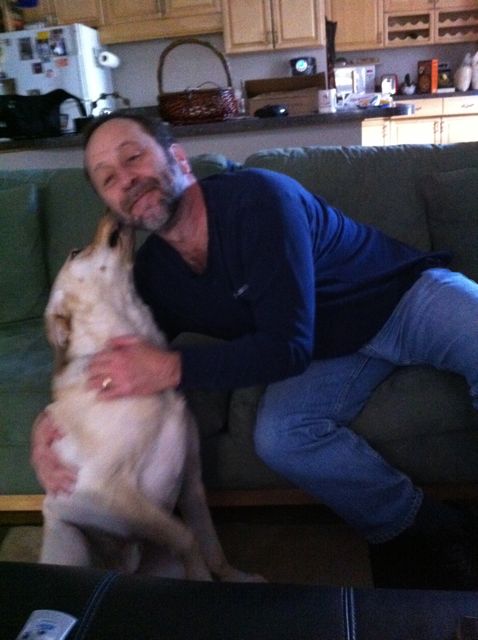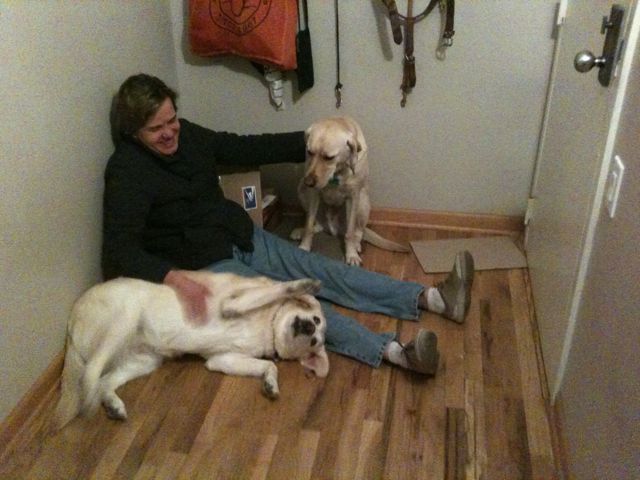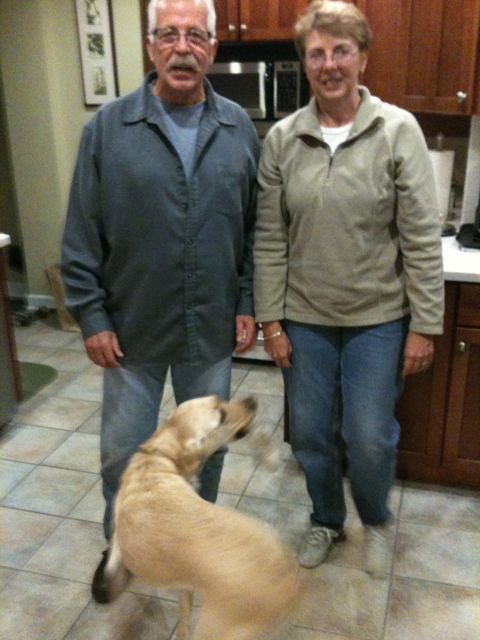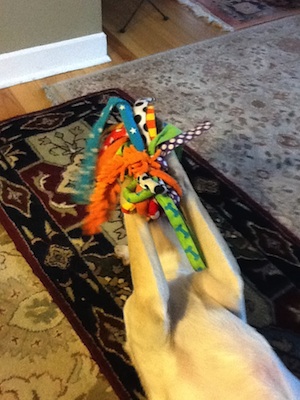Animal translation
January 9, 2012 • 9 Comments • Posted in blindness, Blogroll, guide dogs, Seeing Eye dogs, Uncategorized, writingThe email came from a veterinary student in England. Her name is Rachel Orritt. “I hope this isn’t too out of the blue,” she wrote. “I have been enjoying reading your ‘Safe and Sound’ blog and was wondering if you would be interested in guest posting for my blog.” Rachel’s note went on to explain that her Animal Translation blog describes “aspects of animal science in plain English.” She asked if I might “share some of the practical aspects of Hanni’s help, and any instances in which she has gone above and beyond expectations to help.”
Hanni retired from guide dog work in 2010! Harper, my third Seeing Eye dog, retired in 2011. I didn’t tell Rachel that, though. I knew I already had a post written about Hanni that would fill Rachel’s requirements, and laziness won the day. After making just a few tweaks, I sent it to Rachel, and she published my guest post on her Animal Translation blog as an intro to a week of guest posts about assistance animals.
It wasn’t until I fetched, ahem, that post I wrote years ago about Hanni that I realized how much my near miss with Hanni in 2007 parallels the one that caused Harper’s early retirement last year. An excerpt from that post I sent to Rachel:
Traffic was rushing by at our parallel, cuing me that it was safe to cross. “Forward!” I commanded. Hanni looked both ways, and judging it safe, she pulled me forward. But then all of a sudden she jumped back. I followed her lead and heard the rush of a car literally inches in front of us. Hanni had seen the car turning right off the busy street. I hadn’t. She saved my life.
Hanni worked for three years after that near miss. Harper retired months after his brush with danger. Three major differences between the incident with Hanni in 2007 and the near miss I had with Harper last year:
- The car in Hanni’s close call didn’t brush her face, in Harper’s case he was brushed by the car.
- I didn’t fall backwards in the Hanni close call, but with Harper I ended up flat on my back in the street.
- By the time Hanni and I had our near-miss, we’d been working together for six years, three of them in the city; Harper and I had been together less than a month.
That last difference is the one I didn’t understand until I’d had a dog for awhile. I had to learn to trust each dog. And each dog had to learn to trust me. By the time Hanni and I had our scares, we’d been through a lot successfully. Not so with Harper.
The similarity: in both cases, I worried the near miss might cause my dog to develop a fear of traffic. Staff at the Seeing Eye have seen dogs react three diffrent ways to near misses:
- Some shrug it off as if to say, whew, we almost got hit by a car, but hey, let’s keep going.
- Some are slightly traumatized but with a bit of retraining can work themselves out of it.
- Some are so traumatized they can’t work again.
The only way the Seeing Eye can determine ahead of time how a dog might react to getting brushed by a car would be to do that in training. Brush them with a car, I mean. They obviously are not going to do that. They do teach the dogs to back away from vehicles heading towards them, and Harper had succeeded at that many times in my early months at home with him in Chicago. The near miss, however, was enough for him.
The other day Whitney was guiding me through our apartment lobby when a neighbor remarked, “This one’s a lot better than that other one, isn’t it?” I didn’t take the time to explain. The four Seeing Eye dogs I’ve worked with have all been great. Each one, and especially the three that I’ve had here in Chicago, have heroically saved me from cars pulling out of alleys, rushing into parking garages, ignoring red lights at intersections. Some “traffic checks” are more dramatic than others, but I am living proof that each and every one of them — Dora, Hanni, Harper and now Whitney — did their job, and I’m proud of all of them.
Which is to say, I’m a little defensive of Harper, and rightly so. The dogs aren’t robots — they’re doing something very, very difficult. And I still miss Harper.
The couple who adopted Harper are having fun with him, and they are also, slowly but surely, working with him to help him overcome the fears that cropped up after my near miss with him in Chicago. Harper has lived with Larry, Chris and their cat George in a quiet Chicago suburb for two months now, and Chris sent us an email yesterday with a subject heading, “major progress.” Harper had walked completely around the block with them two days in a row! “Most of the time it’s me walking backwards, coaxing A LOT, but we’ve gotten it done!” she wrote, the number of exclamation marks in the note accentuated her delight in Harper’s progress. “All of this has been without the leash — he still wigs out when I put it on him outside (inside, it’s not a problem at all).”
Every one of my guide dogs has been a hero. None of them better than another. Just different. And if you ask me about Harper, I’d say he’s still showing his bravery: Chris sent another email just now to say Harper went all around the block for a third day in a row. “I’m so excited!!!!!!!!!” Chris wrote. Me, too!






